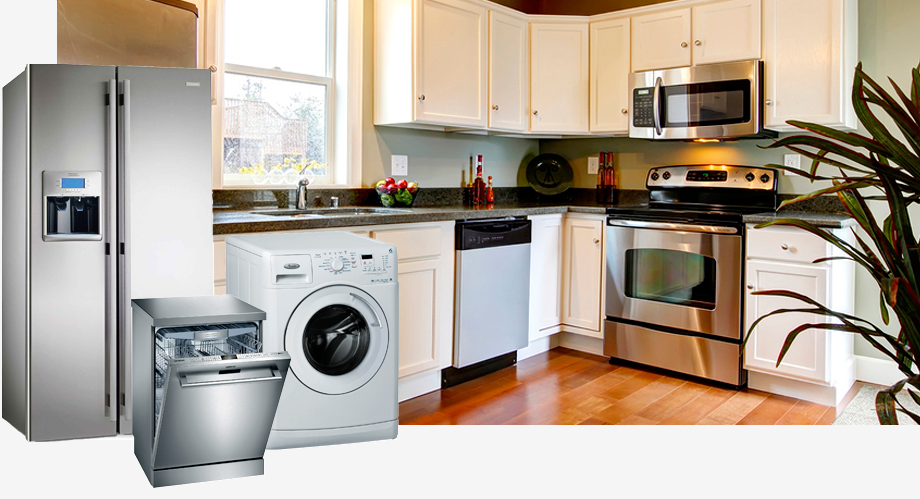Repairing your appliances instead of calling an expert, is time-saving, cost-effective and can often extend the lifespan of your appliances. If you’re interested in solving the problems you face with your appliances at home These tips can help. Remember, first and foremost, safety. Be sure to wear protective gear and to disconnect the power before starting any task on any device.
Always Start By Checking the Obvious
It is always advisable to look for the most basic issues before you start looking for more serious issues and perform the household appliance repairs. It is important to check the for power settings, making sure the appliance is powered on and on, examining for sure that the outlet is receiving electricity, and so on. Certain appliances won’t operate if they are placed on a surface that is uneven or if their filters are blocked, and they begin to overheat. Make sure to do these checks before diving in further.
Know the 50% Rule
The 50% rule says that the appliance must be more than 50% complete in its anticipated lifespan (you will typically locate life-span estimates within the manual or on the internet). If the estimated cost for repairs and replacements exceeds more than half of an appliance that is brand new and you’re likely to have to replace the appliance completely. This can help in comparing the cost of repair at home and professional services, DIY and replacement.
Listen to Your Moving Parts
Moving parts are the most susceptible to failure because of wear or failure. When you are repairing appliances, begin by inspecting the moving components. In the case of the majority of appliances, this will mean checking the fans and motors to be sure they’re working properly. The best tip to repair your home appliance is to look for the noise. Motors, fans and other similar parts tend to produce a lot of noise when they’re not working. Be aware that fans and belts are fairly simple to replace, whereas motors can be costly and difficult to fix or replace.
Understand the Refrigerant Cycle
The refrigerant is found in a variety of appliances, such as air conditioners, heat pumps and refrigerators. It’s essential to be aware of what the cycle of refrigerant is, how it functions and what could be wrong. This guide will aid you in understanding the route refrigerant travels along with how evaporator compressor, and condenser function together. This will make it much simpler to perform repairs for your appliances at home and to identify specific issues in the event that one of these components becomes unresponsive or malfunctions. This will let you know what kind of care your fridge requires and if it is suffering from an issue with refrigerant or a similar issue.
Buy a Good Multimeter
How can you tell the source of the problem in the wiring of the appliance? Test it! To do that, you’ll require the right equipment. Buy a multimeter that permits you to test voltage and other vital signals that tell the electrical components aren’t operating. If you’re looking to be a pro at home appliance repair, you’ll require a multimeter. Always make sure you are taking the appropriate safety measures.
Check Ignition Processes
If you own appliances powered by gas they rely on an ignition procedure to start. Some have electric starters and others have pilot lights, however this is a typical cause of problems for otherwise robust appliances. Verify the ignition process and ensure that the pilot light is lit and that the starters are correctly aligned and there’s nothing blocked by soot.
Know Where Your Hoses Are
Your dishwasher, washing machine, and a variety of other appliances rely on hoses for moving water around. When there is a leak or kink you must check the hoses and valves to determine the component which needs to be changed and sealed. Hoses can get worn out prior to other parts and therefore you should be attentive to the state of these hoses while performing repairs to your home appliance.
Replace Seals and Gaskets
Gaskets and seals are often found on refrigerator and oven doors, as well as other areas in the background. Make sure you are inspecting these parts for cracks or damages and replacing them when necessary.
Look Up Appliance Error Codes
With the advent of technology, the Internet makes it much easier to locate errors more than before. There are more and more appliances that have them such as ovens and microwaves to dishwashers and washing machines. If an appliance’s code is displayed, you should research the meaning of the code and decide whether you can solve it on your own or if you need to.
A Screwdriver Isn’t Enough: Buy a Full Toolkit
You’ll need the right tools for home appliance DIY repair. There are plenty of low-cost tools to help you get going. Don’t be afraid to build your collection in the future! Fore more details – https://www.mdappliances.co.nz/
